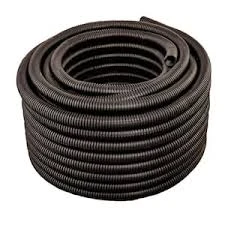cable carrier systems
Understanding Cable Carrier Systems Efficiency in Cable Management
Cable carrier systems, widely utilized across various industries, serve as a crucial component in maintaining organized and efficient cable management. These systems are designed to guide and protect cables and hoses while they move with machinery, providing solutions that enhance durability, safety, and performance in workplaces.
At the core of a cable carrier system is the cable carrier, a modular structure usually constructed from materials such as plastic or steel. These carriers create a pathway for cables and hoses, preventing tangles and damage that could arise from movement and friction. As machinery operates—whether in manufacturing, robotics, or automation—the cable carrier system allows cables to move freely while remaining securely housed.
One of the primary advantages of cable carrier systems is their ability to improve efficiency. In high-mobility environments, such as manufacturing lines or robotic applications, cables can be subject to wear and tear. A cable carrier system minimizes this risk by offering a dedicated path for each cable, reducing the likelihood of kinks or cuts that can lead to downtime and costly repairs. Furthermore, by organizing the cables neatly, fewer errors occur during maintenance or repairs, ultimately enhancing overall productivity.
cable carrier systems

Another significant benefit is the flexibility and scalability these systems offer. Cable carriers can be customized in size, shape, and configuration to cater to specific operational needs. Companies can design their systems to accommodate different types of cables, such as power cables, control cables, or pneumatic hoses, effectively fitting the requirements of diverse applications. This adaptability is especially vital in industries like automotive, aerospace, and heavy machinery, where technological advancements and evolving processes demand versatile solutions.
Safety is yet another critical factor where cable carrier systems shine. By securing cables and hoses, these systems help to minimize tripping hazards and potential accidents in the workplace. In robotic applications, the containment of cables prevents accidental entanglement, safeguarding both equipment and personnel from harm. Additionally, using durable materials means these systems can withstand harsh environments, including extreme temperatures and exposure to chemicals, further enhancing workplace safety.
In conclusion, cable carrier systems represent an indispensable aspect of modern industrial applications. By improving cable management efficiency, offering flexibility and scalability, and enhancing safety measures, these systems contribute significantly to the operational effectiveness of various industries. As companies continue to advance and automate processes, investing in quality cable carrier systems will be crucial for optimizing output and ensuring safe, reliable operations. Whether it is in a bustling manufacturing facility or a cutting-edge robotics lab, the importance of cable carrier systems cannot be overlooked and will continue to play a vital role in supporting innovation and excellence in cable management.








